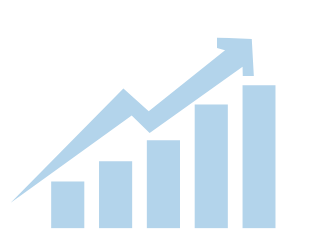In the modern era, credit card debt has become a widespread issue in many countries, including Canada. As individuals rely more heavily on credit cards for their financial transactions, the potential for accumulating debt has significantly increased. This article will shed light on the current state of credit card debt in the Canadian economy, employing relevant statistics and analysis to provide a comprehensive understanding of this pressing matter.
The emergence of credit cards has revolutionized the way people handle their finances. These convenient plastic cards have simplified transactions and facilitated ease of purchase, leading to an increase in overall consumer spending. However, this convenience comes at a cost, as many individuals fall into the trap of debt due to overspending and mismanagement of their credit cards.

Overview of the Canadian Economy
Before diving into the specifics of credit card debt in Canada, let’s first understand the overall economic landscape of the country. According to Statistics Canada, the economic growth rate for the nation was 3% in 2019. The unemployment rate has shown a decline from 5.8% in 2018 to 5.6% in 2019. These positive indicators suggest a healthy economy where individuals have sufficient income to support their daily expenditures.
Current State of Credit Card Debt in Canada
While the Canadian economy exhibits strong growth and stability, the issue of credit card debt persists. The average Canadian owes a considerable amount in credit card debt, with recent reports indicating that the average Canadian holds around $4,000 to $5,000 in credit card debt. This alarming statistic highlights the need for individuals to prioritize managing their credit card usage and debt.
Factors Contributing to Credit Card Debt
Several factors can be attributed to the accumulation of credit card debt among Canadians. To gain a deeper understanding, an analysis of the key factors can be helpful:
- High Interest Rates: Credit cards tend to have notably higher interest rates compared to other forms of debt, such as mortgages and car loans. This high-interest burden can quickly accumulate, particularly when individuals are unable to pay off their balances in full each month.
- Unplanned Spending: Impulsive buying and the absence of a well-defined budget can lead individuals to make purchases they cannot afford. This lack of discipline can exacerbate credit card debt accumulation.
- Minimum Payments: The convenience of making minimum payments can give individuals a false sense of security, as they may not fully comprehend the long-term consequences of their debt. By paying only the minimum payment required, individuals can remain trapped in a cycle of revolving debt, as the interest continues to accumulate.
- Financial Illiteracy: A lack of understanding regarding credit card terms and conditions, including interest rates, grace periods, and penalties, can contribute to excessive credit card debt. This lack of financial literacy prevents individuals from making informed decisions about their credit card usage.
The Impact of Credit Card Debt on the Canadian Economy
The rising credit card debt in Canada has not only affected individuals but also poses broader economic implications. The excessive debt burdens faced by individuals can lead to decreased consumption, reduced savings, and limited investment opportunities. As a result, these factors hinder economic growth and stability within the country. Moreover, excessive credit card debt can negatively impact credit scores, making it harder for individuals to secure loans in the future, hindering overall economic activity.
Strategies for Managing Credit Card Debt
While the statistics regarding credit card debt in Canada may seem daunting, there are effective strategies to manage and overcome this challenge. By adopting practical financial habits, individuals can work towards debt reduction and financial stability:
- Creating a Budget: Developing and adhering to a budget is essential for managing credit card debt. This process involves identifying sources of income, tracking expenses, and allocating funds appropriately.
- Paying off High-Interest Debt First: Prioritizing debt repayment, starting with higher interest credit cards, helps individuals save on interest expenses in the long run.
- Seeking Professional Assistance: In cases of overwhelming debt, seeking the guidance of credit counsellors or financial advisors can provide valuable insights and assistance in managing debt repayment.
- Limiting Credit Card Usage: Reducing reliance on credit cards and opting for cash or debit payments for daily expenses can prevent the accumulation of additional debt.
- Increasing Payment Amounts: Whenever possible, paying more than the minimum payment due can expedite the debt repayment process and save on interest charges.
Credit card debt remains a widespread concern within the Canadian economy, posing challenges for individuals and the overall financial stability of the nation. To combat this issue, it is crucial for Canadians to cultivate sound financial habits, actively manage their credit card debt, and strive towards a debt-free future. By adopting strategies such as budgeting, prioritizing debt repayment, and seeking professional assistance when needed, individuals can regain control of their financial well-being, contributing to a healthier and more sustainable economy in Canada.
More reading here: Charge Off vs. Write Off for Credit Card Debt: What You Need to Know

